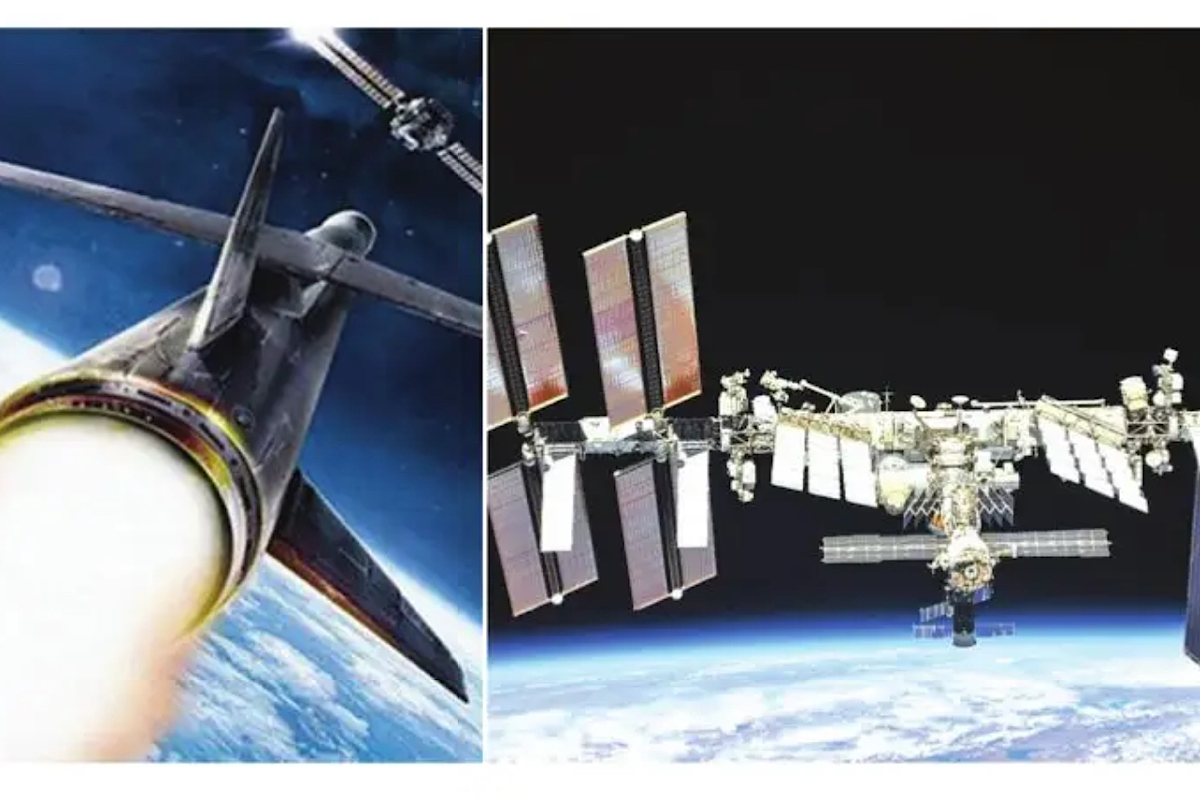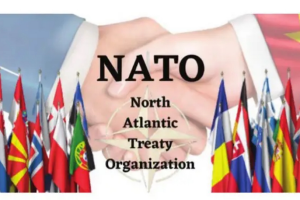Satellites are integral to our life and civilisation. Without them, there would be no communication network or Global Positioning System (GPS). You won’t be able to draw money from the ATM, operate your mobile or drive in unknown territory. If a country develops the capability to destroy another country’s satellites, it can bring the latter’s economy and life to a grinding halt without even firing a single shot at it.
One doesn’t even need to destroy all the satellites because satellites work in networks ~ a typical GPS has 24 satellites distributed evenly around earth to establish permanent coverage. Destroy one and the functionality of the entire system is severely affected. LEO is a potential space-choke point because being nearer to the earth, a satellite placed in LEO can offer higher resolution, and every country will target LEO to place military satellites that can offer resolution up to only six inches. Just like on the Earth, space also can become an arena for intense competition. Five points known as the Lagrange’s Points and denoted by L1, L2, L3, L4 and L5 surround the Earth where the gravitational forces of the Sun and the Earth cancel each other out, giving stability to a spacecraft placed therein while requiring minimal energy to keep it there. L1 is 1.5 million km away from the Earth where India recently placed its spacecraft Aditya-L1. L2, where the giant James Webb Space Telescope was positioned last year, is directly behind the Earth in the line joining the Sun and the Earth. This is also where China has placed a satellite recently, allowing it to view the dark side of the moon where it is also contemplating to establish a military base. Others have not been used as yet, but all these points will become objects of intense competition for the strategic advantages they confer ~ they can act like car parks in space because of the stability of position that they offer at the minimal expense of fuel. In previous centuries, as Alfred Mahan has shown, dominance on Earth was decided by controlling the sea routes.
Air power was added in the last century and in this century, it would likely be space power, for which the ability to place military assets in space ~ especially in the LEO ~will become the determining factor. LEO is also the area where any spacecraft travelling to the Moon and beyond can be refuelled and resupplied, and refuelling will be necessary if distant planets like Mars or asteroids are to be explored for energy and mineral resources. Hence whoever controls this corridor will become a gatekeeper to the outer space beyond, and can prevent a rival from refuelling within it. If the Earth wants to exploit space for energy, the need for which is already assuming significance in view of our poor achievement of the climate goals, it has to develop a vast array of solar reflectors to deflect solar energy upon the Earth for power generation; such an array will likely have to be placed on LEO.
LEO will also be the gateway to outer space to explore which spaceships would need refuelling; a nation that develops such facilities would easily control the spaceships of other nations going beyond LEO. In Halford Mackinder’s Heartland Theory (1904) of geopolitics, Heartland was the resource-rich areas of presentday Russia and Central Asia’s five Stans which were earlier part of the USSR. It stated that whoever controls East Europe controls the Heartland, and whoever controls the Heartland controls the world. Applying this theory to space, Professor Dolman Everett stated that whoever controls LEO controls the near-Earth space; whoever controls the nearEarth space controls the Terra, i.e., the area surrounding the Earth and determines the destiny of mankind.
The idea that space is a global common is disappearing fast, requiring us to develop a new set of enforceable rules if we want to avoid the kind of conflicts in space that have characterised the geography of earth since the beginning of history. The OST and the Moon Agreement are now the relics of an older era; we now have another treaty ~ the Artemis Accords of 2020. Artemis, the twin sister of Apollo, is the Goddess of Moon in Greek mythology. The accord lays down the rules for activities on the Moon.
Unlike the OST or the Moon agreement which are multilateral agreements, the Accords are a series of bilateral agreements authored by the USA, reflecting the US approach to space exploration and hence by joining the Accord members accept American leadership. More than 170 countries are yet to sign the Accord including India, while China and Russia were specifically excluded from its scope. The ambition is to build permanent structures on the Moon for human habitation by the early 2030s, to mine and exploit lunar resources, mainly helium-3 (He3), apart from silicon, titanium, aluminum and rare earth metals needed by every nation since these are vital for new technologies, especially He3, essential for nuclear fusion, which is expected to be the future energy source for humanity, but which is rarely available on earth.
More than 99 per cent of the helium found on earth is He4, the common isotope of helium; only 0.0001 percent is He3. But on the Moon which lacks an atmosphere, billions of years of solar wind may have deposited millions of tons of He3 on its surface. He3 has little radioactivity; estimates show that 1 ton of He3 may give energy equivalent of 50 million barrels of crude oil which may be our ultimate solution to energy. Further, as first demonstrated by India’s Chandrayaan-I mission in 2008 and later confirmed by NASA in 2020, the Moon may have vast deposits of water too in the Aitken basin in its south pole, an area 2,500 km wide and 13 km deep ~ so deep that even sunlight may never reach the deepest parts where immense deposits of water may lie captive in ice crystals from which hydrogen and oxygen can be produced to make rocket fuel when the Moon becomes a stopover for deeper forays into space.
Launching a rocket from the Moon requires a fraction of the energy it needs on earth on account of its low gravity. The Artemis accord states that mining of Moon’s resources does not constitute appropriation, while the country doing the mining does not own the territory being mined. This not only opens up new areas of conflict but it means those who cannot reach early will stand to lose access to the Moon’s resources, and that means the poorest nations. The loosely-worded Accord only says that a nation engaged in the Moon will notify their activities on the Moon. Suppose China arrives before the signatories? OST said the moon should be used only for peaceful purposes, that it is the province of all mankind. But there is no agreed definition of the term.
Russia defines “peaceful” as being nonmilitary, while the US defines it as “non-aggressive”, thus permitting non-aggressive military activity like military communication. Under the US Congress’s Wolf Amendment of 2011, NASA has been prevented from cooperating with China on space exploration. China is the only country operating its space Station Tiangong 3 as a sovereign nation. The ISS is a cooperative venture between the US, Russia, EU, Japan and Canada. The ISS is nearing the end of its life and is due for decommissioning in 2031, but Tiangong 3 will last till 2037. China and the USA will compete with each other as rivals not friends in the foreseeable future. Whether they cooperate in space will depend on how they do this on Earth.
China does not recognise the United Nations Convention on the Law of the Sea (UNCLOS) for maritime disputes and may reject the Artemis Accord of which it is not a part. In 2020, the Russian Space Agency has already termed the Accord as an “invasion” of the Moon which may turn into another Afghanistan or Iraq. The world badly needs another treaty ~ not simply for cooperation between nations but also for regulating the activities of private business corporations which are due to jump into the fray. Nations have already demonstrated their ability to use ASAT ~ anti-satellite weapons ~ to destroy their own satellites, and they can surely use them to destroy another’s. One such attempt by Russia in 2021 blew its satellite into more than 1500 pieces of wreckage some of which entered the orbit of the ISS almost threatening their crew of seven. Accidents may happen any time, but the consequences can be dangerous. This again raises the need to have an abiding law for all nations if space is not to be a lawless jungle of astro-politics.
In 2019, India tested its own anti-satellite weapon and decided that it could not stand by while China and the other nations advanced in space. India’s space program has so far remained focused on civilian uses, but the military aspect cannot be ignored. The existing international treaties are clearly insufficient to restrict the use of space for military purposes, and all past efforts for disarmament of space through international consensus have yielded nothing.
For enforcement of treaties, nations must first develop enough capability for deterrence, as in the case of nuclear weapons. India must also focus on developing space weapon systems and try catching up with China which is already far ahead of us in space technology. In that sense, the IAF has taken a step in the right direction.
(The writer is a commentator, author and academic. Opinions expressed are personal)











